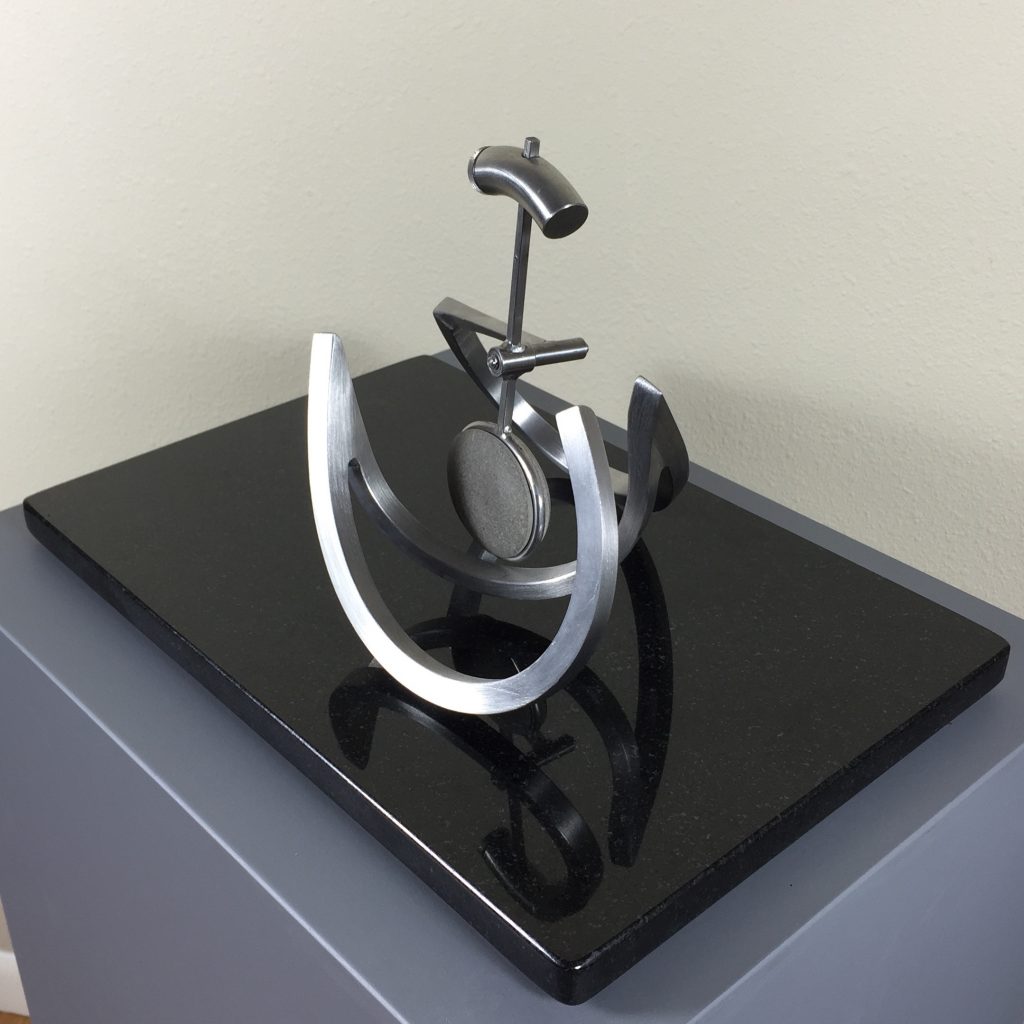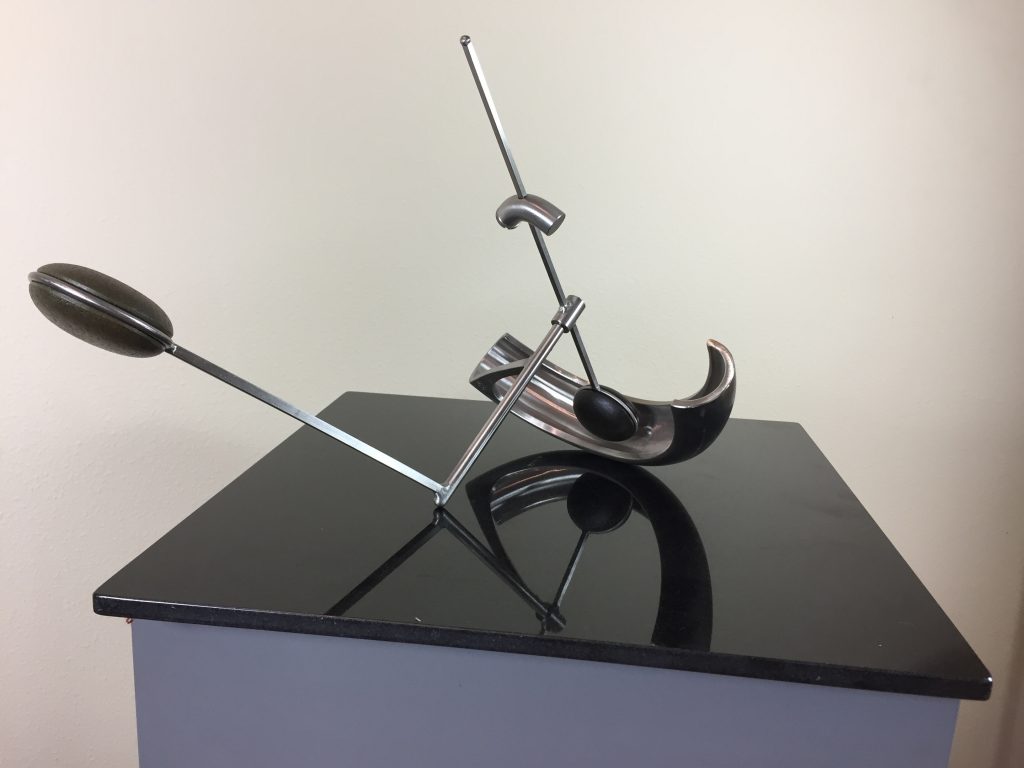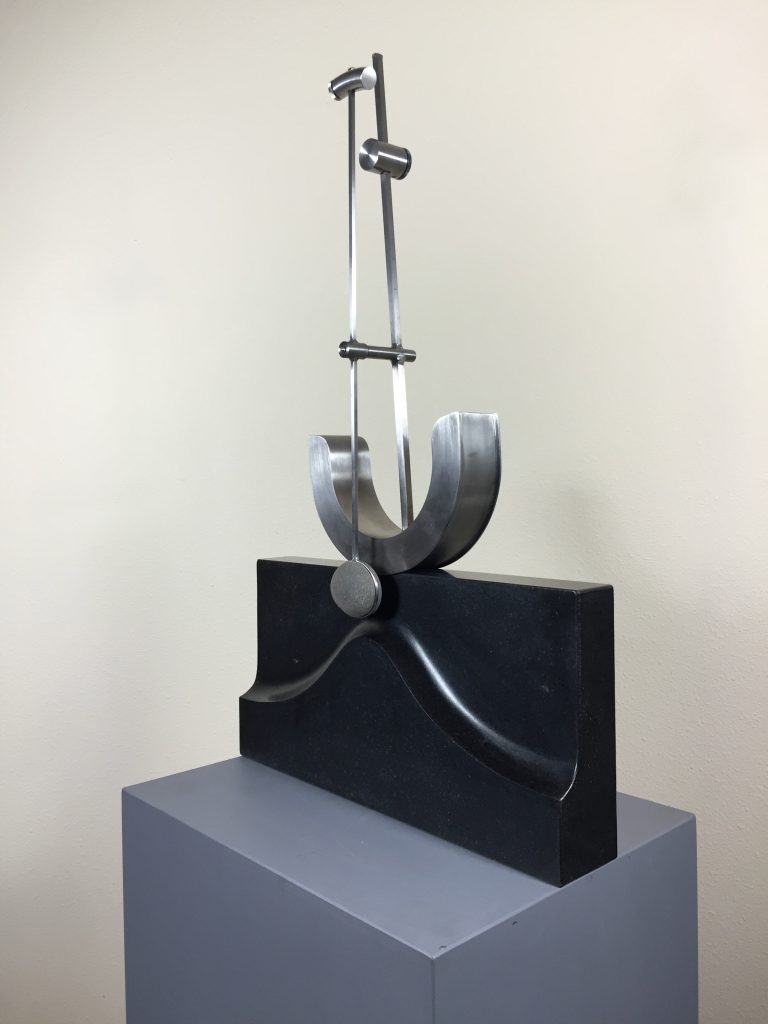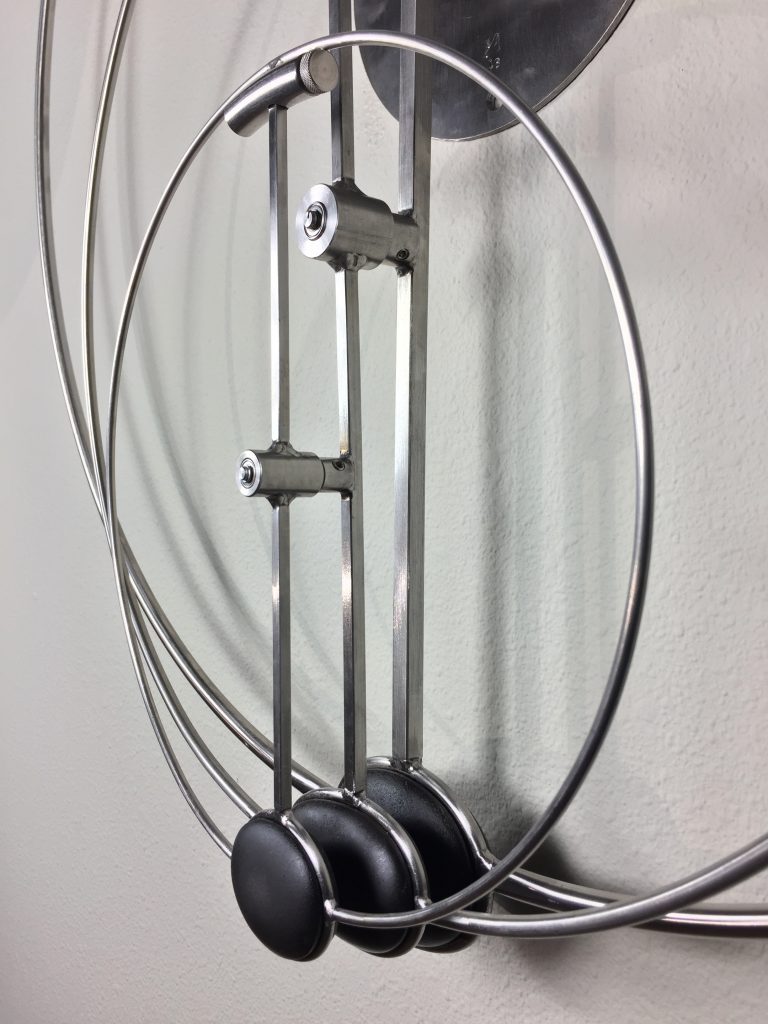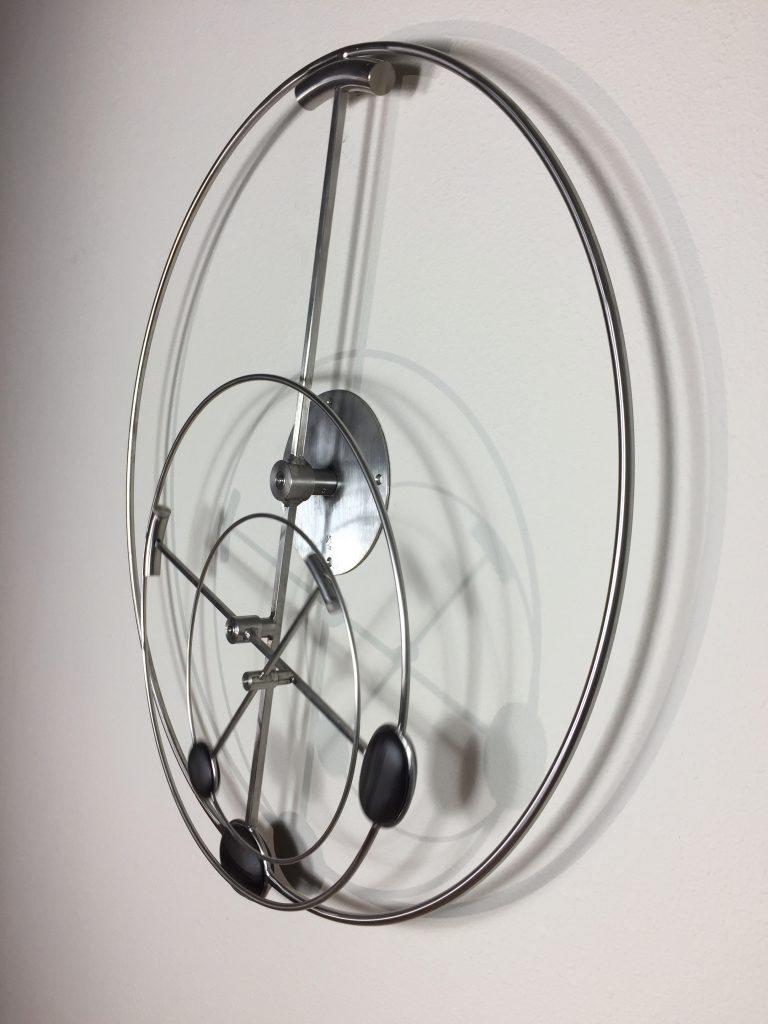Kinetic Sculpture and Musical Instruments
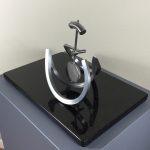


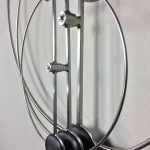
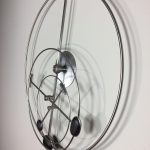
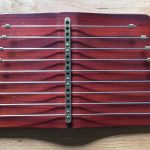
Small Sculpture
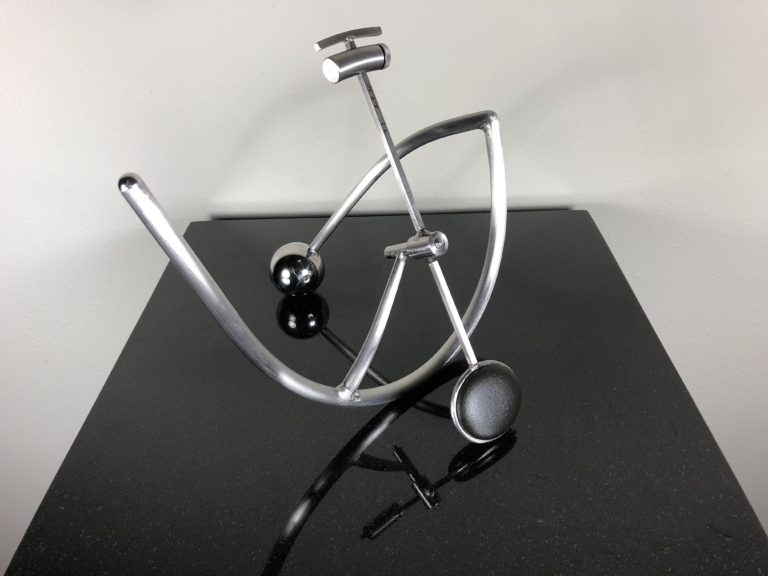
Sculpture in Motion

Medium Sculpture
Sculpture in Motion

Large Sculpture
Sculpture in Motion


Wall Sculpture
Sculpture in Motion

About the Work
Kinetic Sculpture by Don MacLane
My work is interactive kinetic sculpture that invites you to explore and alter the rhythmic interplay between their moving parts. I am interested in the interaction between viewer and sculpture; the variation in motion patterns and the work’s relationship to its constraints. Exploration starts as the viewer pushes the piece for the first time then continues with successive pushes at different the initial angles and speeds. These changes result in variation in the rhythm as energy is transferred between the elements as they alternate between kinetic and potential energy states. Most pieces allow interaction on another level with provisions that allow the viewer to alter the frequency of one or more of the elements. For example, changing the length of a pendulum or curvature of a rocker will alter their natural frequency and change the piece’s pattern of motion. The periodic motion of the pieces typically cycle between progressive reduction of amplitude then gradually increasing movement. Pushing can also introduce harmonics that make the pieces appear to quiver as if illuminated with a strobe light. While the movement will stop after a few minutes, curiosity often leads the observer to adjust and push a sculpture again before it actually comes to a full stop.
There are quite a number of issues represented in these pieces. The granite base of a rocking piece is a surrogate for an idealized plane. Its surface reflects an image of the sculpture resting on it. The contact between the sculpture and the plane occurs at only two places and the lack of a third contact dictates that the sculpture is only conditionally stable. Its position and attitude is a balance of gravitational and inertial forces acting on the elements of the piece. For wall-mounted pieces, clearance to the mounting surface and between the moving elements take on the role played by the granite of rocking pieces. Large outdoor pieces are wind driven and the clearance between moving elements is the subject.
Without motors, the pieces spend most if time at rest. Therefore their form must be pleasing in that state. Gentle transitions in section and curves are influenced by curve forms found in the art of native inhabitants of the Pacific Northwest Coast and curves and details seen in typography. The stone weights are of an ovoid form common in Northwest Coast art. The stone weights are intentionally reminiscent of Stone Age tools and provide a contrast to the space age technology of the welded and machined stainless steel. The pieces also draw on the aesthetic of old scientific instruments.
The observer can interact with the smaller pieces at several levels. As with all sculpture one can view it from different positions. With these pieces the viewer can also touch and set them in motion with a gentle push. Beyond that there is the possibility for experimentation. Changing the initial conditions (angle and velocity) of the individual elements when they are set in motion or changing the adjustment of a weight’s position will lead to different patterns of motion. The observer is challenged to recognize the pattern – what just happened? Waiting to see if it will repeat a sequence creates a tension for the observer. Different adjustments result in different patters or moods of the motion. Some patterns are simple and slow others more complex, jerky or fast. My favorite patterns are the ones where one element gradually looses amplitude, comes momentarily to rest and then steadily gains amplitude before that cycle is repeated. It is this counter-intuitive cycle that first caught my attention and has sustained me over years making these kinds of systems.
Some of the pieces are marked so that you can easily find adjustments that result in frequency relationships between the elements that are related to each other by integer ratios. Those ratios are the basis for construction of musical scales. At these settings the motion patterns are analogous to musical intervals. Other pieces have a few stamp marks to indicate adjustments that have resulted in interesting patterns. One can use a sharpie marker to make marks to indicate adjustments that resulted in compelling patterns of movement. Isopropyl (rubbing) alcohol can be used to remove the marks.
The motion results in a constantly changing form and relationships between the parts. Clearance is important and carefully controlled. Finally the motion of a rocker against the granite makes a satisfying sound that is reminiscent of sharp scissors cutting cloth.
